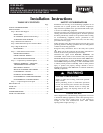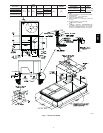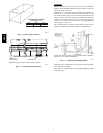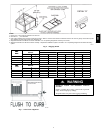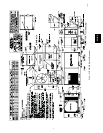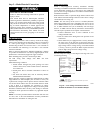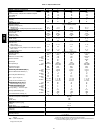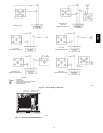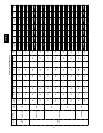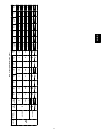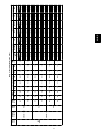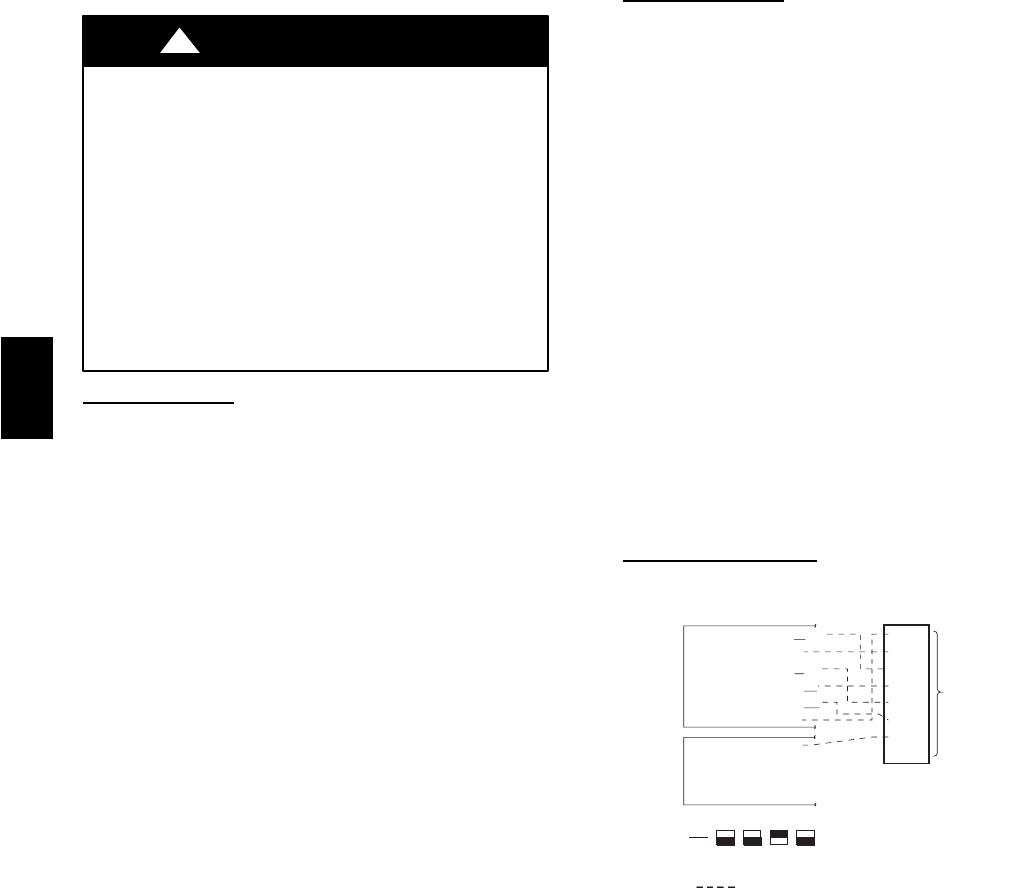
8
Step 5 —Make Electrical Connections
ELECTRICAL SHOCK HAZARD
Failure to follow this warning could result in personal
injury or death.
Unit cabinet must have an uninterrupted, unbroken
electrical ground to minimize the possibility of personal
injury if an electrical fault should occur. This ground
may consist of electrical wire connected to unit ground
lug in control compartment, or conduit approved for
electrical ground when installed in accordance with
NEC (National Electrical Code), ANSI/NFPA (National
Fire Prot ection Association), latest edition, and local
electrical codes. Do not use gas piping as an electrical
ground.
!
WARNING
Field Power Supply
All units except 208/230-v units are factory wired for the voltage
shown on the nameplate. If the 208/230-v unit is to be connected
to a 208-v power supply, the transformer must be rewired by
disconnecting the black wire from the 230-v 1/4-- in. terminal on
the transformer and connecting it to the 200-v 1/4 --in. terminal
from the transformer.
Refer to unit label diagram for additional information. Pigtails
are provided for field service. Use factory-supplied splices or UL
(Underwriters’ Laboratories) approved copper connector.
When installing units, provide a disconnect per NEC.
All field w iring must comply with NEC and local
requirements.
Install field wiring as follows:
1. Install conduit through side panel openings. For units
without electric heat, install conduit between disconnect
and control box.
2. Install power lines to terminal connections as shown in
Fig. 12.
3. For units with electric heat, refer to Accessory El ectric
Heat Installation Ins tructions .
During operation, voltage to compressor terminals must be within
range indicated on unit nameplate (also see Table 3 and 4). On
3--phase units, voltages between phases must be balanced within
2% and the current within 10%. Use the formula shown in Table
3 and 4, Note 2, to determine the percentage of voltage
imbalance. Operation on improper line voltage or excessive phase
imba lance constitutes abuse and may cause da mage to electrical
components. Such operation invalidates any applicable Bryant
warrant y.
NOTE: If accessory thru-the-bottom connections and roof curb
are used, refer t o the Thru-the-Bottom Accessory Installation
Instructions for i nformation on wiring the unit.
Field Control W
iring
Install a Brya nt-approved accessory thermostat assembly
according to ins tallation instructions included with the accessory.
Locate thermos tat assembly on a solid wall in the conditioned
space to sense average temperatur e in accordance with thermostat
installation instructions.
Route thermostat cable or equivalent single leads of colored wire
from subbase terminals through connector on unit to low-voltage
connections (shown in Fig. 10).
NOTE: For wire runs up to 50 ft, use no. 18 AWG (American
Wire Gauge) insulated wire (35_Cminimum).For50to75ft,use
no. 16 AWG insulated wire (35_C minimum). For over 75 ft, use
no. 14 AWG insulated wire (35_C minimum). A ll wires larger
than no. 18 AWG cannot be directly connected to the thermostat
and will require a junction box and splice at the thermostat.
1. Connect thermostat wires to screw terminals of low
voltage terminal board.
2. Pass the control wires through the hole provided in the
control box.
3. Some models may be equipped with a raceway built into
the corner post on the left side of control box (See Fig.
12.) This raceway provides the required clearance between
high-- voltage and low voltage wiring. For models without
a r aceway , ens ure to provi de the NEC required clearance
between high --voltage and low-- voltage wiring.
Heat Anticipator
Settings
Set heat anticipator settings at 0.8 amp for first stage and 0.3 for
second stage heating.
WIRE
CONNECTIONS
TO
LOW-VOLTAGE
SECTION
COOL STAGE 1
FAN
HEAT STAGE 1
COOL STAGE 2
HEAT STAGE 2
24 VAC HOT
24 VAC COM
N/A
OUTDOOR AIR
SENSOR
Y1/W2
G
W/W1
Y/Y2
O/W2
R
C
S1
S2
THERMOSTATDIPSWITCH SETTINGS
R
G
Y1
Y2
W1
W2
C
IPD/X
ON
OFF
A
B
C
D
LEGEND
NOTE: Underlined letter indicates active thermostat output when
configured for A/C operation.
Field Wiring
C06008
Fig. 10 --- Low--Voltage Connections With or
Without Economizer or Two --Position Damper
551B,C



